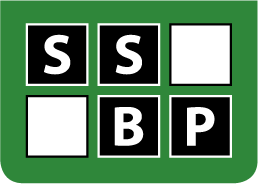Presentation 10 – Dr Nola Chambers
SSBP Virtual Symposium 2023
Development of Consensus Recommendations for the Identification and Treatment of TSC-Associated Neuropsychiatric Disorders (TAND)
Presenting Author : Nola Chambers
Abstract
Development of Consensus Recommendations for the Identification and Treatment of TSC-Associated Neuropsychiatric Disorders (TAND)
Chambers N.1, Heunis T-M.2, Vanclooster S.2, de Waele L.3,4, Jansen A. C.,2,5,6, de Vries P.J.1, TAND Consortium
1 Centre for Autism Research in Africa (CARA), Division of Child and Adolescent Psychiatry, University of Cape Town, Cape Town, South Africa
2 Mental Health and Wellbeing Research Group, Department of Public Health, Vrije Universiteit Brussel, Brussels, Belgium
3 Department of Paediatric Neurology, University Hospitals Leuven, Leuven, Belgium
4 Department of Development and Regeneration, KU Leuven, Leuven, Belgium
5 Department of Pediatrics, Koningin Mathilde Moeder- en Kindcentrum, Antwerp University Hospital, Antwerp, Belgium
6 Department of Translational Neurosciences, University of Antwerp, Antwerp, Belgium
Background: Tuberous Sclerosis Complex (TSC) is commonly associated with a wide range of TSC-Associated Neuropsychiatric Disorders (TAND) that are often under-identified and under-treated, yet they contribute significantly to the burden of disease. To date, clinical recommendations for the diagnosis and management of TAND have been limited and non-specific. The goal of this study was to develop comprehensive evidence-based clinical practice recommendations for TAND of relevance to the global TSC community.
Methods: This study was carried out by the TAND Consortium, an international, interdisciplinary and participatory consortium of 24 individuals, including TSC family representatives, from all World Health Organization regions as part of the TANDem Project. At the time of this project, no internationally-adopted standard methodology existed for the generation of clinical practice recommendations. We therefore developed our own systematic procedure consisting of 10 discrete steps which included systematic evidence review, generation of summary statements and recommendations, voting, and consensus discussions to generate evidence-informed consensus recommendations for TAND.
Results: This procedure yielded ten core principles applicable to all individuals with TSC, along with cluster-specific recommendations for each of the seven natural TAND clusters identified in the literature (autism-like, dysregulated behaviour, eat/sleep, mood/anxiety, neuropsychological, overactive/impulsive, and scholastic), and a set of ‘wraparound’ psychosocial cluster recommendations. The overarching recommendation is to ‘screen’ for TAND at least annually, to ‘act’ using appropriate next steps for evaluation and treatment, and to ‘repeat’ the process to ensure early identification and early intervention with the most appropriate biological and behavioural evidence-informed approaches to support individuals with TSC and their families.
Conclusion: The consensus recommendations provide a systematic framework to approach the identification and treatment of TAND for clinical care teams, and families who live with TSC. As a final aim of the TANDem Project, a TAND Toolkit has been developed to promote implementation of the recommendations.
Keywords: Tuberous sclerosis complex, TAND, consensus recommendations
Discussion Section
Use the comment box below to post questions for the author, and to discuss this presentation.
Note:
All comments are public, and comments may be moderated.
2024 SSBP Conference
Membership
Information
Contact
The Society for the Study of Behavioural Phenotypes (SSBP)
The Society for the Study of Behavioural Phenotypes (SSBP) is an international, interdisciplinary research society for studying the development, learning and behaviours of individuals with genetic disorders and ways of helping to improve lives. The society is registered as a charity in the UK (No. 1013849) and was set up in 1987.
Copyright 2024 © | The Society for the Study of Behavioural Phenotypes (SSBP)
